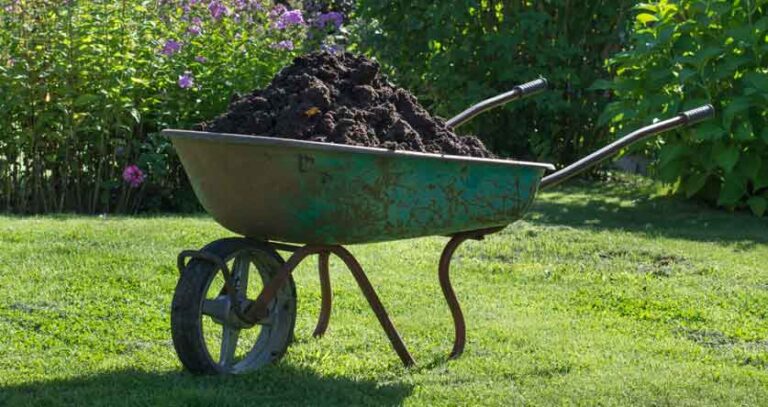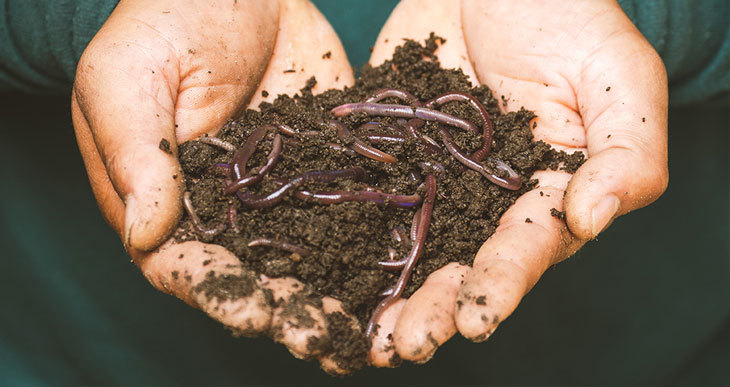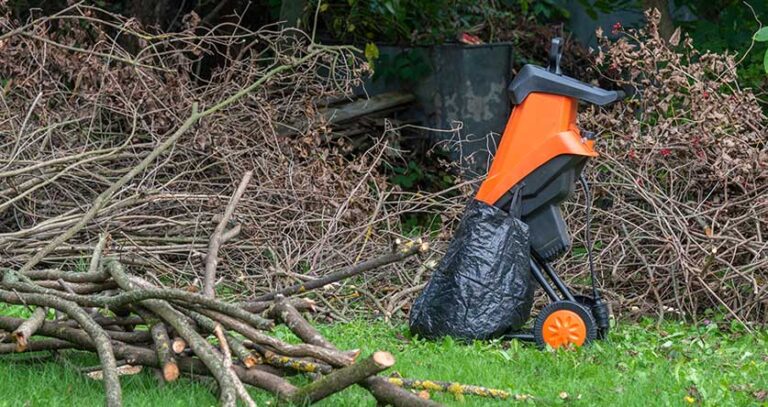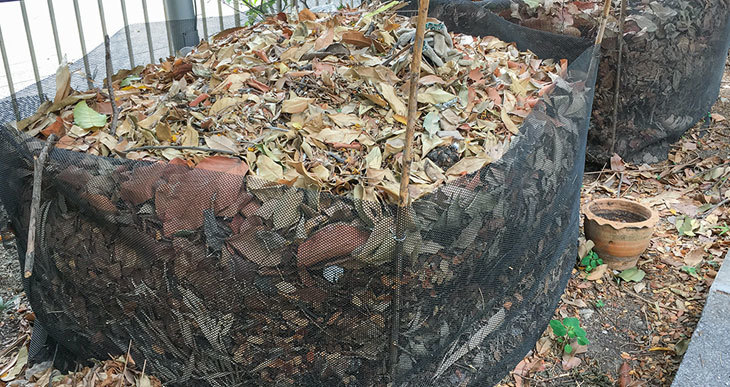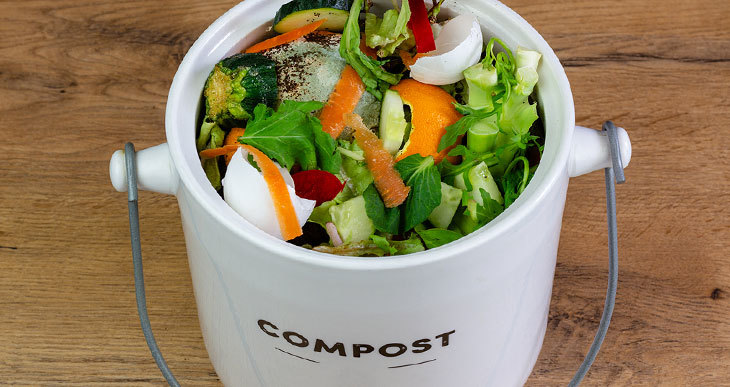Fall Composting (10 Things To Do in Autumn)

Autumn is one of the best times of the year for composting. But the things you need to do in the fall are slightly different from summer!
This article will tell you the best composting practices to apply during this season.
The guidelines below will put you on the right path if you want to optimize your fall composting routine.
And there are some really great things happening now to take advantage of!
How Do You Compost in the Fall?
The composting activities you can do in the fall include gathering dry leaves and dead annual plants. They provide an excellent carbon source and should be stored or used directly for compost. Also, autumn is a fantastic time of year for spreading any compost you make during the spring and summer.
It’s true…
Fall is a special time when nature recycles nutrients and prepares for winter.
Similarly, there are plenty of things you can do for your compost right now to take advantage of the current season and prepare for the colder months ahead.
So to get the most out of your composting efforts at this time of the year, here are some of the things I recommend you do.
10 Fall Compost Care Tips
Collect Dry Leaves For Use in Future Compost.
Autumn leaves are “Gardener’s gold”!
And this time of year is the perfect opportunity for collecting fallen leaves so you can use them later.
If you’re anything like me, you probably have lots of green composting materials in the summer (grass clippings, fresh yard cuttings). And not enough carbon-based brown materials.
Dry leaves are a wonderful source of carbon. Store them “off pile” to use them when you run short of other brown matter.
You can store leaves for compost in a dedicated bin, or simply gather them in reusable garden bags until you need them. (Amazon link)
During the growing season, there are lots of “greens” that need balancing out with “brown” carbon content. So, believe me, you’ll be pleased to have a stockpile of these lovely leaves during the months when carbon materials run scarce.
2. Spread Any Compost you Made in Spring & Summer
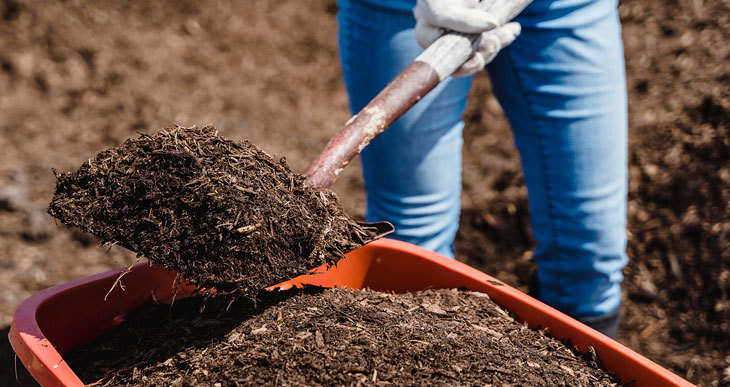
Fall is a very favorable time to put large amounts of compost in your garden. Whatever you’ve been making during the early part of the year, add it to your garden beds now.
You can leave it lying on top of the soil, where it will act as mulch, helping reduce weeds and adding nutrients to the earth. By next spring, the compost will have broken down into the soil.
But compost that just sits on the garden can dry out quickly and lose some of its nutrients. So if you have the energy, do some spadework and mix it with the soil.
Using up your compost benefits your plants immediately, but as an added bonus, emptying your compost bin makes room for new materials!
Read this to find out how much compost you need for different uses.
3. Add Autumn Leaves Directly to Compost.
You can also use the abundant supply of autumn leaves for immediate composting in early fall.
After all, your compost bin is empty now… Right?
At the beginning of autumn, you get the advantage of falling leaves (carbon-rich brown matter) and the final green grass clippings and garden trimmings (green nitrogen-rich material). The combination of green and brown feedstocks like this is the perfect balance to build a good compost heap.
And starting your compost now means you’ll have a usable product in the spring when you most need it.
Tip, as fall progresses, you’ll find yourself lacking green stuff. If you’re still composting leaves, you’ll need a source of nitrogen. Try popping down to your local coffee shop and asking for their used coffee grounds! These are an excellent source of nitrogen to balance out the dry leaves and twigs.
4. Make Leaf Mold

Too many leaves?
Try making some leaf mold.
Leaf mold is just the term used for composted leaves. If you have an overabundance of leaves in the fall, then you can compost them on their own and make an excellent soil amendment.
This kind of compost is full of valuable nutrients for your plants, such as calcium and magnesium. It makes a great potting mixture, or you can add it to garden beds when it’s ready next year.
You don’t even need to use a compost bin. Just gather leaves into big trash bags. Add some water if they’re too dry. Then close up the bag, and puncture a few holes in the bag using a garden fork (mind your feet!) This will allow some airflow.
One word of warning. Don’t hold your breath! Carbon-based organic matter like dried leaves on their own will take longer to decompose. You can get a partially rotted compost in 12 months and a more crumbly mixture after two years.
5. Compost Your Dead Annuals
As your annual plants die off, pull them out, including the roots, break them up, and put them in your compost bin.
They’re another great source of organic matter, so don’t let them go to waste. But be sure to shred them into smaller parts to hasten the process of decomposition (the larger surface area of shred matter gives the composting microbes more to work with).
6. Use Trimmings from Perennial Plants
Similarly, perennial plants will start to fade in the fall. Again, remove any stems, flowers, and dying foliage and put these in your compost.
The same rules apply to breaking them up into smaller parts.
Not only will this add a variety of nutrients to your finished compost, but removing faded greenery from perennials can be essential for their wellbeing the following year.
7. Bulk up Your Compost Heap
All these ingredients you’re adding to the pile now also have another crucial collateral effect.
It adds more bulk to the heap.
If you can, continue to add material to the pile over the next several weeks as you move further into autumn to get it ready for winter.
A bigger pile with more mass will overwinter better because it will lose less heat. Your collection of organic matter has plenty of air gaps that help insulate the heap. The more materials, the greater the insulation.
A good volume for a compost bin is generally 4 feet by 4 feet wide and 4 feet high. The bigger, the better, but placing smaller heaps to get some sunlight can also help.
8. Insulate Your Compost
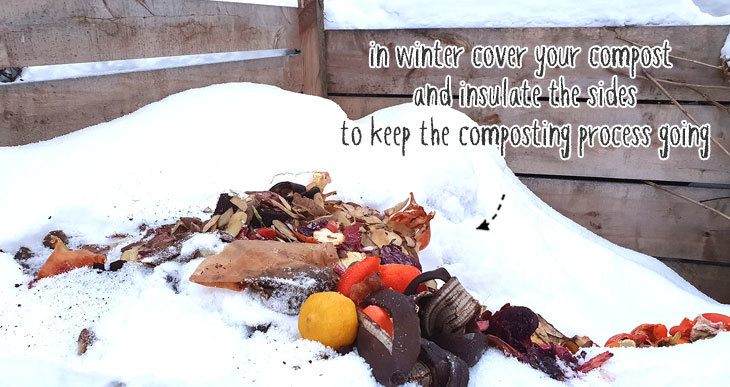
Heat is an important factor for good composting. You don’t necessarily need intense heat for decomposition to work correctly, but you DO want some heat.
For decomposition to be effective, the temperature should be above 55°F (13°C).
(A compost thermometer with a long stem, like this one on Amazon, is ideal for controlling temperatures as you move into winter)
In fall and winter, the rotting process can be enhanced and made to work longer if you insulate the bin.
Be careful what you choose to protect your compost pile from the elements. Most types of insulation lose their effectiveness when they get wet.
You could try a waterproof insulated tarp like this one… or even some plastic bubble wrap would do the trick!
9. Take Advantage of Free Compost Feedstocks
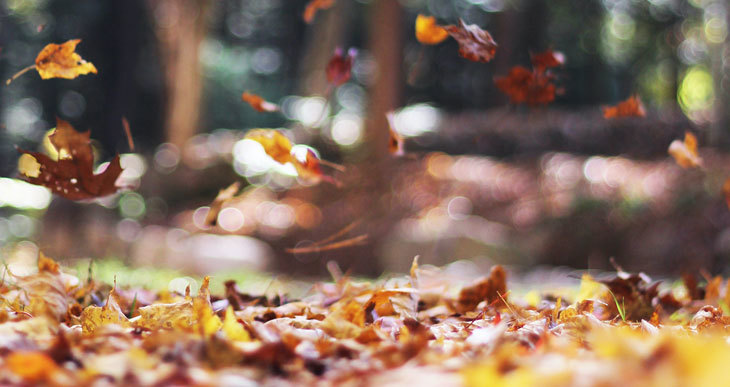
Autumn is a terrific time to explore the possibilities of acquiring other free resources for your compost.
Go out into your neighborhood and collect more dried leaves. Or ask friends and neighbors if you can collect their fallen leaves (I’m sure they’ll be glad to be rid of them).
I often find myself ogling piles of golden leaves by the roadside during this time of year! Trees do an excellent job of retrieving trace minerals from the subsoil and storing them in the leaves. Some of these nutrients are recovered by deciduous trees before the leaves fall, but they still contain valuable trace elements.
Snatch them up!
After all… they’re free!
10. Aerate and Turn Less Often in Fall and Winter
Composting microbes need air to function correctly, which is why, for the best results, most composters aerate the pile by turning.
But as the cold season approaches, you should reduce your turning schedule and turn compost only about once per month.
The center of the pile is generally the hottest. When you mix up the pile, you risk losing heat. So avoid disturbing the heap too often, so the compost has a chance to remain warm.
Can You Start Composting in the Fall?
Not only can you start a compost pile in the fall, but many would also argue that it’s the best time to do so. The surplus of green and brown compost materials in early autumn is the perfect balance for composting. And starting a pile now means you’ll have finished compost for the spring!
Composting requires a good mix of green and brown organic matter.
(“Green” refers to nitrogen-rich materials like fresh grass clippings. “Brown” means anything with lots of carbon like twigs and dead leaves).
The key to having a successful compost pile is maintaining a balance of both. This is why autumn is a perfect moment for starting a composting project…?
Composting Fall Leaves

To make the process of composting fall leaves easier, they can be shredded beforehand, using a leaf shredder or mulching mower. Alternatively, surplus leaves can be transformed into leaf mold.
The abundance of dead fallen leaves in autumn can become overwhelming. But there are a couple of methods you can use to lessen the burden.
Too many leaves all at once will matt together. This can slow down the composting process because the microorganisms responsible for decomposition need oxygen to work.
You can speed up the process by shredding them (this provides a greater surface area for composting bacteria to work on). A mulching lawnmower is best for this(Amazon link) The blades are specially designed to finely chop grass and leaves. And all you have to do is run up and down over your fallen leaves, then rake them up for composting!
Leaf mold is another easy way to deal with surplus dead leaves and still get something useful from them (see above). If you get in the habit of doing this every year, you’ll have a steady supply of lovely compost!
Do Fall Leaves Make Good Compost?
Fallen leaves make good compost since they’re a valuable supply of organic matter. They can be put to excellent use for your growing plants by transforming them into compost. Nearly any type of leaf from trees that shed for winter can be used to make a good leaf mold or added to a compost bin.
Evergreen leaves should be used with caution. Pine needles create an acidic leaf mold, so collect these separately. You can use them to mulch around acid-loving plants, such as blueberries.
Should I Put Down Compost in the Fall?
You can start to put down compost in the fall and use up what you produced during the year. If you have enormous amounts, make the job easier by spreading it as mulch. The soil microbe breaks it down, so it gets mixed into the soil for the next season.
Because winter is coming, we’re spreading compost. This time of the year, especially in late fall, soil life is looking for food. But, if you think about how leaves fall and collect on the ground in forests, you are just following a natural process by adding compost to your plants.
Final Thoughts
Once the summer is over, I always plan to extend my composting efforts into the fall and winter. I do that to ensure an abundant supply of homemade compost for my garden.
I’m blessed to have a lot of trees here, and last year, I gathered up a lot of leaves…
I hope you do too !


